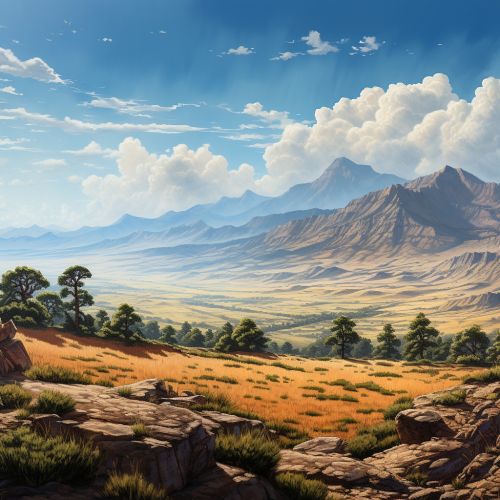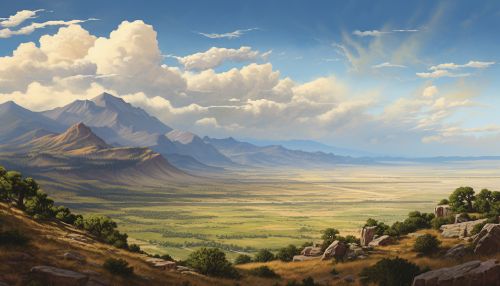Great Basin
Geography
The Great Basin is a large, arid region of the western United States, characterized by a series of enclosed, self-draining basins. It spans across multiple states, including Nevada, Utah, California, Idaho, Oregon, and Wyoming. The region is bounded by the Wasatch Mountains to the east, the Sierra Nevada to the west, and the Snake River Plain to the north. The southern boundary is less distinct, but is generally considered to be the Mojave and Sonoran deserts.


Geology
The Great Basin's geology is a product of millions of years of tectonic activity. The region is part of the larger Basin and Range Province, which is defined by parallel, north-south trending mountain ranges and valleys. This topography is the result of crustal extension, where the Earth's crust is pulled apart, creating space that is filled by sinking blocks of crust, forming basins.
The region is rich in mineral resources, including gold, silver, and copper. The Carlin Trend, located in northeastern Nevada, is one of the most productive gold-mining areas in the world.
Climate
The Great Basin's climate is classified as cold desert, with hot, dry summers and cold, snowy winters. Precipitation is scarce, and what little there is often evaporates before reaching the ground, a phenomenon known as virga. The region's climate is influenced by its high elevation and its location in the rain shadow of the Sierra Nevada.
Flora and Fauna
Despite its arid conditions, the Great Basin is home to a diverse range of plant and animal species. The dominant vegetation type is sagebrush steppe, with sagebrush being the most common plant. Other plant species include pinyon pine, juniper, and various types of grasses and wildflowers.
The region's fauna is equally diverse, with species such as the pronghorn, mule deer, and various species of rabbits and rodents. The Great Basin is also an important habitat for several species of birds, including the greater sage-grouse and the pinyon jay.
Human History
The Great Basin has been inhabited by humans for at least 12,000 years. The earliest inhabitants were Paleo-Indians, who were followed by various Native American groups, including the Shoshone, Paiute, and Ute. These groups adapted to the harsh desert environment, developing complex strategies for survival.
European exploration of the Great Basin began in the early 19th century, with the arrival of fur trappers and traders. The region was later settled by pioneers traveling along the California Trail and the Mormon Pioneer Trail.
Today, the Great Basin is home to several large cities, including Salt Lake City, Reno, and Las Vegas, as well as numerous small towns and rural communities.
